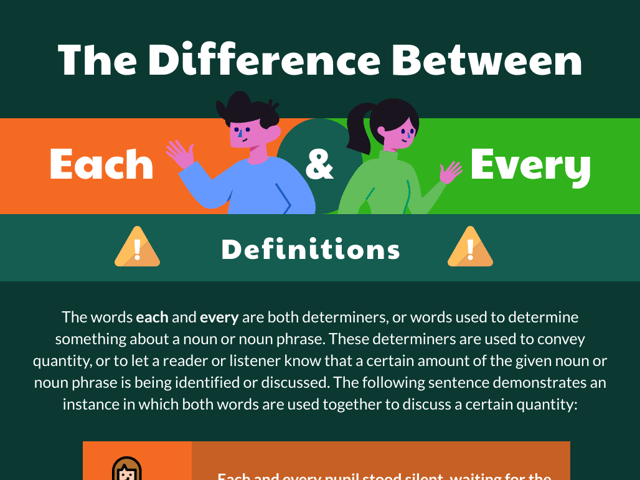
Is the HiSET Easier Than the GED?
Over 2 million 16-24-year-olds in the U.S. lack a high school education or equivalent. Are you one of them and ready to take your education to the next level? Fortunately, most colleges and employers accept a high school equivalency diploma so you don’t need to go back to high school. There are two main equivalency exams: the HiSET and GED.
Which exam is the most difficult? Is the HiSET exam easier than the GED? Or is the GED a better option? We have all the essential information you need to determine which equivalency exam is right for you.
Why Take the HiSET or GED Exam?
Are you unsure about the benefits a high school equivalency diploma can offer? Earning a GED or HiSET diploma may seem unimportant or inconvenient, but it can make a big difference in the quality of your life.
Unfortunately, a lack of high school education is a significant barrier to:
-
Higher education
-
Military enlistment
-
State and federal job programs
-
Job opportunities
-
Career development
-
Training programs
-
Job retention
-
Promotions and raises
The result of not having a high school diploma or equivalent is a much lower lifetime earnings average compared to other education levels. High school dropouts earn only $626 median per week. By contrast, high school graduates earn $809, while bachelor’s degree holders earn $1,334. Not having a high school diploma or equivalent adds up to significant income loss over a lifetime of wages.
The unemployment rate is higher for those without a high school diploma as well. For high school dropouts, it’s a whopping 11.7%. It’s only 9% for high school graduates, however, and a mere 5% for people with a bachelor’s degree.
Finishing a high school curriculum can be tough for many students. Most have the knowledge and skills to finish, but simply can’t graduate on time due to other life issues. Employers and educators know that outside factors can get in the way of your education. The HiSET and GED exams ensure you can still earn the education level you need for future success.
What is the HiSET?
The HiSET (High School Equivalency Test) is a more recent alternative to the GED exam. It’s been available since 2014. The Educational Testing Service (ETS) currently administers the HiSET program. ETS is the largest educational non-profit organization across the globe.
Like the GED, HiSET offers a testing alternative to a full high school curriculum. This exam is also based on OCTAE’s College and Career Readiness Standards for Adult Education (CCRs). CCRs seek to coordinate adult education with the Common Core State Standards (CCSS) used in grade schools. This helps college and career programs develop consistent academic benchmarks for their adult students.
What is the GED?
The GED (General Educational Development) has been around since 1942. Its original purpose was to help soldiers who served during WWII. At that time, many enlistees dropped out of high school so they could join the military.
The American Council of Education (ACE) developed the GED exam. Although ACE is a non-profit, Pearson VUE administers the test. Pearson is a for-profit publishing company based in London.
Like HiSET, the GED seeks to test students on the knowledge and skills they learn in high school. The most recent test revision was in 2014. The test undergoes regular changes to other aspects like scoring, however. Always double-check and make sure your online resources are up to date.
Which Exam is More Difficult?
Both exams test your academic abilities. Although their test material is slightly different, the GED and HiSET are functionally the same. They both simulate a standard high school curriculum.
Test difficulty can be subjective. There are many factors that can affect your performance level:
-
Test material
-
Format method
-
Question type
-
Test location (i.e. at home or at a center)
-
Time for completion
-
Scoring methods
The GED is only available on a computer, for example. If you prefer pencil and paper testing, the HiSET will be easier.
As always, the easiest exam is the one you’re most prepared to take. After you select the best test for you, study and preparation are your pathways to passing scores.
The HiSET: What’s on the Exam?
The HiSET contains five subtests. Each subtest has its own time for completion:
-
Reading: 65 minutes and 50 questions (80 minutes for Spanish)
-
Writing: 120 minutes for 60 questions and 1 essay
-
Math: 90 minutes for 55 questions
-
Science: 80 minutes for 60 questions
-
Social Studies: 70 minutes for 60 questions
You can take the full test, or take one or more subsets at a time. The HiSET is available in both English and Spanish. All questions are standard multiple-choice, with the only exception being the essay portion.
Language Arts: Reading
The reading subtest tests your ability to comprehend and analyze written passages. These passages will include:
-
400-600 words
-
Informational or literary texts
-
Distinct writing structures (essays, poetry, biographies, etc)
-
Visual media (charts and maps)
Unlike math, the answers for this section are not always obvious. You will have to stretch your critical thinking skills to select the best answer.
Language Arts: Writing
The writing subtest tests your ability to use language correctly. This includes critiquing writings for accuracy in grammar, spelling, format, and other language rules.
You’ll also write your own language-accurate essay. The essay portion can be difficult if you aren’t used to writing, so you may want to practice writing essays as part of your preparation.
Mathematics
The math subtest is divided as follows:
-
Algebraic concepts: 45%
-
Numbers and operations: 19%
-
Measurement and geometry: 18%
-
Data analysis, probability, and statistics: 18%
The test provides a formula sheet to help answer certain questions. However, you must memorize these three formulas:
-
Pythagorean Theorem
-
Distance Formula
-
Quadratic Formula
The use of calculators is permitted for this subtest. Check with your testing center to see which types are available.
Science
The science subtest contains three main areas:
-
Life Science: 49%
-
Physical Science: 28%
-
Earth Science: 23%
Like math, this section tests your ability to work with data. This includes using the scientific method along with visual aids. You may use a calculator during this subtest.
Social Studies
The Social Studies subtest is divided by:
-
History: 35%
-
Civics and government: 35%
-
Economics: 20%
-
Geography: 10%
Like reading, this section will test your critical thinking skills. It will also test your knowledge of general facts. You will need to brush up on both your strategic and memorization skills to do well on this portion of the HiSET.
The GED: What’s on the Exam?
The GED tests the same subject areas as the HiSET. However, the reading and writing areas are combined into one section:
-
Reasoning Through Language Arts (reading and writing)
-
Mathematical Reasoning
-
Social Studies
-
Science
The test times are more complicated for Language Arts and math. There are also different question formats throughout the exam:
-
Multiple choice
-
Fill in the blank
-
Drag and drop
-
Drop-down
-
Hot spot
-
Short answer
The GED exam is available in French, Spanish, and English, although this can vary by state. Double-check your state information to see which languages are available in your area.
Reasoning Through Language Arts
The language arts section is divided as follows:
-
Reading Comprehension and Language Use: around 35 minutes
-
Essay Portion: 45 minutes
-
10-minute break
-
Reading Comprehension and Language Use: around 60 minutes
The non-essay sections may vary the times allotted. However, the total test time will never exceed or go below 150 minutes.
Mathematics
The math section is divided into two parts:
-
5 questions with no calculator
-
41 questions with a calculator
The TI-30XS Multiview Scientific Calculator is the only calculator you are permitted to use. It’s provided for you digitally on the test screen, so there’s nothing to purchase or bring to the test. The total test time is 115 minutes. You will only have a short 3-minute break in between sections.
Science
The science section is relatively straightforward. You will have 90 minutes to answer 34 questions. The areas are as follows:
-
Life Science: 40%
-
Physical Science: 40%
-
Earth and Space Science: 20%
You will also need to know the scientific method. You may use a calculator during this section.
Social Studies
Like science, the social studies section is straightforward. You have 70 minutes to answer 35 questions. The areas included are:
-
Civics and government: 50%
-
U.S. History: 20%
-
Geography and the World: 15%
-
Economics: 15%
This section also contains data and data analysis. It stresses critical thinking over memorization.
GED vs HiSET: Availability and Price
You may decide the HiSET looks easier than the GED, or vice versa. There are other factors that may affect your decision, however, such as availability and fee structure.
If the HiSET is not available in your state, you will find it much easier to take the GED. Pricing can also vary by state, so it’s best to check costs for both exams before signing up for one or the other.
Availability
The GED remains the most-widely available test. It’s used in 41 states and five U.S. territories:
-
Virgin Islands
-
Northern Marianas Islands
-
Guam
-
Bermuda
-
American Samoa
Only nine states currently do not offer GED testing:
-
Indiana
-
Iowa
-
Louisiana
-
Maine
-
Missouri
-
Montana
-
New Hampshire
-
Tennessee
-
West Virginia
These states replaced the GED exclusively with the HiSET instead. The former TASC (Test Assessing Secondary Completion) exam was also used in some areas, but it was discontinued on December 31, 2021.
HiSET is currently offered in 26 states, as well as certain U.S. territories:
- California
- Colorado
- Georgia
- Hawaii
- Illinois
- Indiana
- Iowa
- Louisiana
- Maine
- Massachusetts
- Michigan
- Minnesota
- Mississippi
- Missouri
- Montana
- Nevada
- New Hampshire
- New Jersey
- New Mexico
- North Carolina
- Ohio
- Oklahoma
- Pennsylvania
- Tennessee
- West Virginia
- Wyoming
- American Samoa
- Marshall Islands
- Northern Mariana Islands
- Palau
Availability is subject to change within your state. You can look up current information on the HiSET test center page, as well as your state’s official information page.
Cost
The fee structures for HiSET and GED also differ by state. The exams can range from free (New Mexico) to $100+ for a full test (California). Double-check with your state’s official .gov site to learn more.
Start Reaching Your Full Career and Academic Potential Today!
The HiSET and GED tests are for students who have not formally completed their high school education. These equivalency exams prove you have the knowledge and skills needed to pass a high school curriculum.
If you’re ready to prove you have what it takes to ace the exams, check out our free resources! We offer GED and HiSET practice tests, study guides, flashcards, and so much more. Create a free account today!
Keep Reading

HiSET Test Blog
Must-Know Science Formulas for the HiSET Test
Achieving proficiency in science can be challenging. If you’re studying…

HiSET Test Blog
The HiSET vs the GED: What’s the Difference?
There are several exams that can be taken as an alternative to receivin…

HiSET Test Blog
The Difference Between “Each” and “Every”
Learning the difference between “each” and “every” can be difficult, ev…